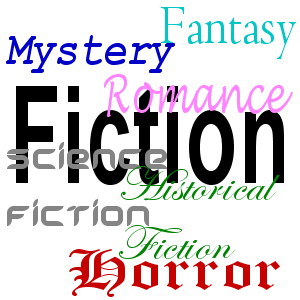A Genre by Any Other Name … Confuses People
Nan Barnes
It’s easy when your book is a mystery, or a children’s book, or another easily identified genre. People know if they like those type of books. But some writers have an idea they want to write about, and like a square peg in a round hole, they don’t have a nice genre slot to fit it into.
 In business, we are all taught to give an “elevator speech”, to describe in just 30 seconds, if need be on a short trip to the upper floor, what exactly it is we do. Why? So people will know if they are interested in us and our business. The same goes for books. They need to be easily slotted into a genre category, for the ease of the casual browser, who will likely make a snap judgment.
In business, we are all taught to give an “elevator speech”, to describe in just 30 seconds, if need be on a short trip to the upper floor, what exactly it is we do. Why? So people will know if they are interested in us and our business. The same goes for books. They need to be easily slotted into a genre category, for the ease of the casual browser, who will likely make a snap judgment.
Just take a look at your supermarket’s bookshelf. The genre is announced loudly by the book’s cover design, and reinforced by the tile and promotional copy. These westerns and romances and thrillers are easy to recognize and are guaranteed to sell.
Other genres are more troublesome. I’ve been reading In Other Worlds: SF and the Human Imagination, a new book out by Margaret Atwood. (If you haven’t read her, I cannot praise loudly enough Atwood’s fascinating novels, essays, and poetry.) Margaret Atwood has been hard to slot in the book-buying world. She terms The Handmaid’s Tale and some of her other novels “speculative fiction”, which has aroused the ire of science fiction fans who would like to claim her as one of their own. Ursula K. LeGuin criticized Atwood’s genre definition, writing in a Guardian article, “This arbitrary restrictive definition seems designed to protect her novels from being relegated to a genre still shunned by hidebound readers, reviewers and prize-awarders. She doesn’t want the literary bigots to shove her into the literary ghetto.”
Atwood tells this story to illustrate a point: calling it science fiction or speculative fiction may seem to be just semantics, until it isn’t. Atwood defines the genres this way: science fiction deals with things that might happen in the future, such as space colonies. But speculative fiction deals with things that might be happing already; it is a more direct commentary on current culture; and it’s not necessarily “scientific”. And fantasy, also often lumped in with SF, is about things that have never happened and could never happen – think unicorns.
Why niggle about this? Because of the book marketing campaigns that follow once a book is slotted into its genre. Or pounded in, like a square peg into a round hole. Atwood describes her horror when her publisher released her books with lurid, sexy covers. Imagine how disappointed those misled buyers would be to read her un-sexy words! She imagines poeple angrily throwing her words into the trash, unread. Ouch.
The publishing industry used to dictate a lot of these genre terms, as they had a pipeline to the bookseller’s shelves, arranged by genre. It was out of the author’s control. Now, in this brave new world of self publishing and online social marketing, we must think about genre, and decide how to present ourselves. Carefully.
Many of our blog readers, and our author clients, fall under the big genre umbrella of biography. This encompasses autobiography, memoir, and family history, and many fascinating topics are also nestled under there too, such as a memoir about a career as a spy or the biography of an avid butterfly collector.
So how do we communicate what exactly our books are? First, unless you’re as good as Atwood, stay under the umbrella and associate yourself with what is already known. Not sure? Find comparable books and see how they have described themselves. Or ask an editor. Next, communicate your identity clearly. Link the genre with the specific subject, such as Suspense Thriller, Cold War or Self Help, Diabetes. Develop a good elevator speech, and try it out on those who have read your draft. Be accurate.
Next, design the book to look like what it really is. Sepia photos on the cover are fine for a memoir, but they are the kiss of death for contemporary chick-lit. (Chick-lit’s neon colors and cartoon illustrations wouldn’t do well for most memoirs, either.)
And last, perhaps most important, find ways to tell the story of your story. Talk about what your book means, specifically, so that people care and appreciate what you’ve written. If you do this part well, you can communicate your unique idea and transcend your genre.